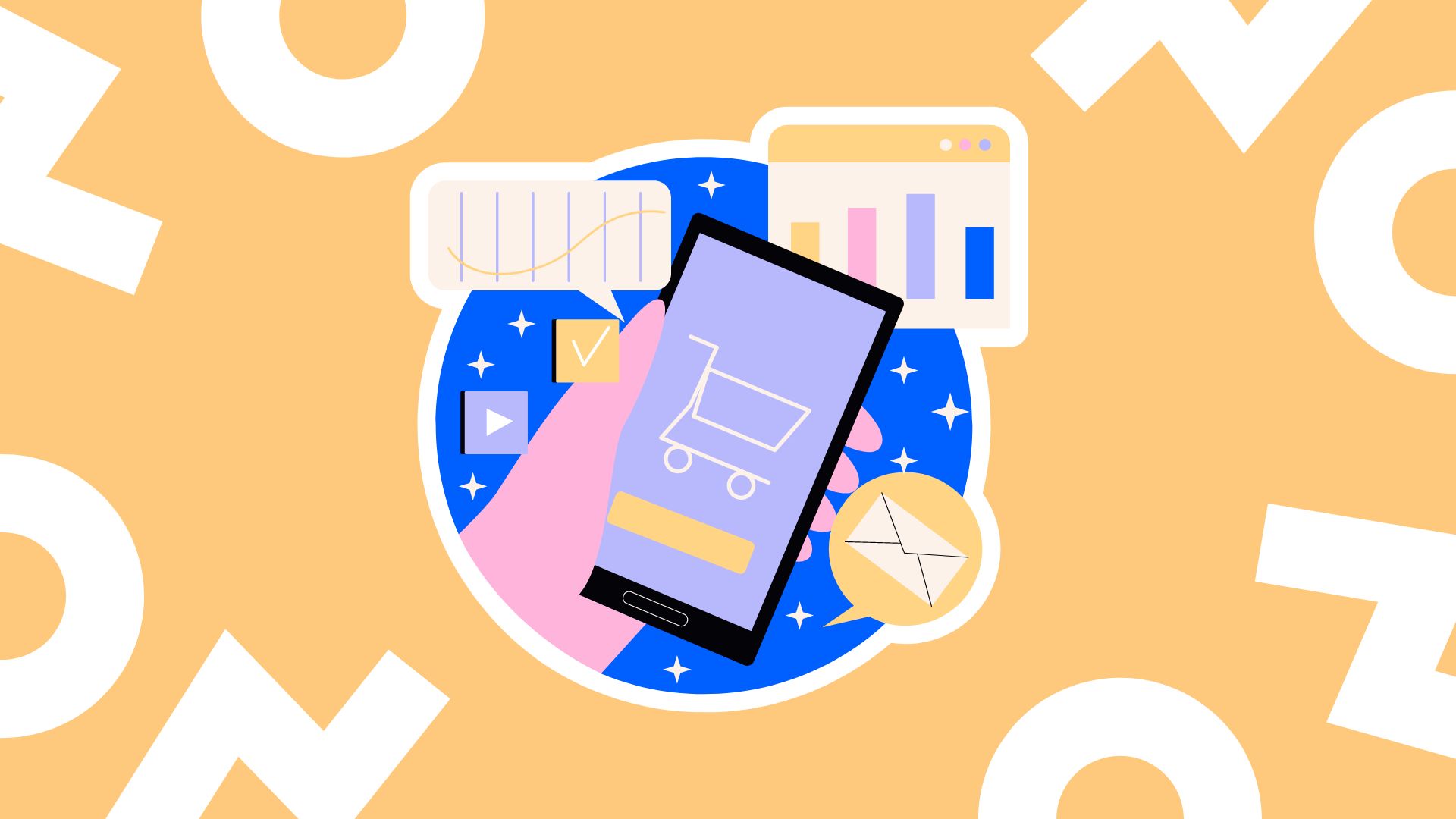Developing an E-Commerce Strategy: Striving & Thriving in 2022
Get started building your e-commerce strategy for selling on Amazon and Walmart. Identify your value proposition, set goals, upgrade your content, and more.
What does an effective e-commerce strategy entail? Navigating the ins and outs of modern-day marketing can be a daunting prospect to newcomers, but with a little planning and guidance, success is certainly there for the taking.
Your strategy is your own personal guidebook, and once you’ve got your goals, plans, and tactics in place, all you have to do is steer the ship (and beware of icebergs). Let’s start with the fundamentals before we get into the nitty-gritty of surviving, striving, and thriving in 2022.
What Is an E-Commerce Strategy?
Having a well-developed plan is essential for success. But where do you start? An e-commerce strategy involves more than just setting goals and developing tactics to reach them. You have to start by answering some essential questions about your business and the market in which you operate. It’s smart to start with some basic questions about your audience. Many refer to this as defining your “buyer persona,” or the best candidate for your product.
For example, if you sell rugs, are you marketing beautiful, ornate patterns to individuals for home use? Or is your product a better choice for commercial use due to its heavy-duty material and stain resistance? Who is more likely to complete the sale and come back in the future? If there is overlap or more than one ideal customer, find ways to engage both.
How do you define your audience? Take a look at who your existing customers are and pinpoint the following characteristics:
- Age
- Income
- Profession
- Location
- Interests
- Desires
- Challenges
- Needs
- Goals
- Where, how, and when they shop
- How and where they gather information
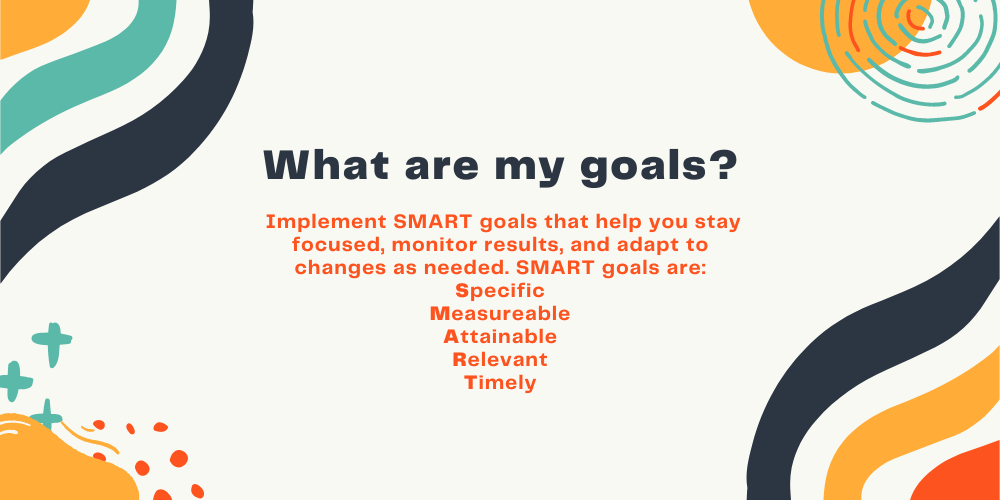
What Are My Goals?
Answering this question might be more challenging than you may think. Sure, we all want to gain loyal fans and increase sales, but what steps do you need to take to get there?
Do you need to define or expand your audience first? Should you develop a stronger brand identity and distinguish the most valuable benefits of your product? Do you want to create a stronger social media presence to keep buyers engaged and coming back for more?
Think long and hard about where you are and where you want to be. As you begin to plan, consider the following questions.
- Goal setting: What is your goal and why?
- Benchmarking: How do you rank against your competitors?
- Risk assessment: How can you predict and prepare for obstacles and risks?
It’s important to stay on your toes and keep yourself informed in the ever-changing world of e-commerce. Implement SMART goals that help you stay focused, monitor results, and adapt to changes as needed. SMART goals are:
- Specific
- Measurable
- Attainable
- Relevant
- Timely
When setting these goals, it can be helpful to also consider your unique value proposition. Online buyers differ greatly from in-store shoppers. They do their research before completing their sale, so it’s important to clearly define why they should buy from you rather than your competitors.
So, what is so special about your product or service? To answer this question, consider the following factors.
What Are Your Customers’ Pain Points?
What are the common struggles associated with your product category? Do people have difficulty with the packaging? Does it crack, snap, or make a mess? Is it incompatible with other common household items or pets? Be honest and upfront about what your product does and doesn’t do. Customers appreciate a straight shooter.
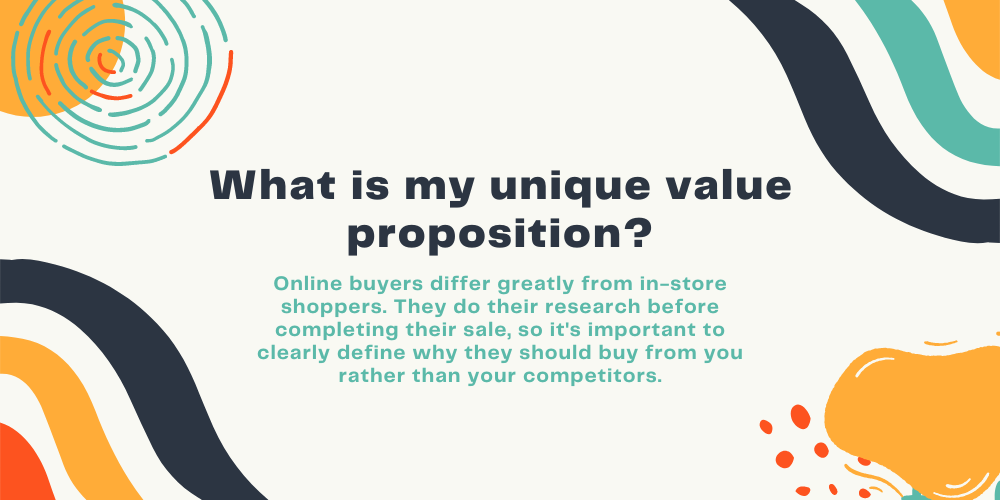
How Can You Add Value to Their Lives?
What exactly does your product do and why does it matter? How does it simplify or enrich buyers’ lives? Make it as easy as possible for your customers to identify the benefits and envision your product or service in their lives. Paint a vivid picture, be specific, and sing your praises without being boastful.
What Are the Important Features of Your Products or Services?
Are your products vegan or non-GMO? Are they organic or sugar-free? Do they come with a warranty or guarantee? Are they made with recycled materials? This is your chance to clearly define what makes your business unique!
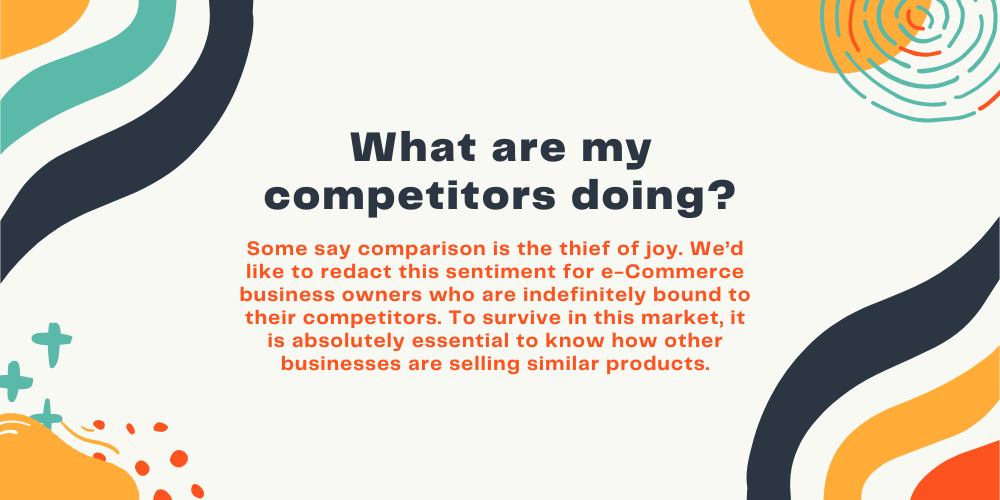
What Are Your Competitors Doing?
Some say comparison is the thief of joy. We’d like to redact this sentiment for e-commerce business owners who are indefinitely bound to their competitors. To survive in this market, it is absolutely essential to know how other businesses are selling similar products. Some basic questions to address include:
- Who are my direct competitors?
- How do their prices compare to mine?
- How does the quality of my product compare to my competitors?
- How are my products different from others in their category?
- How do my competitors advertise and promote their products?
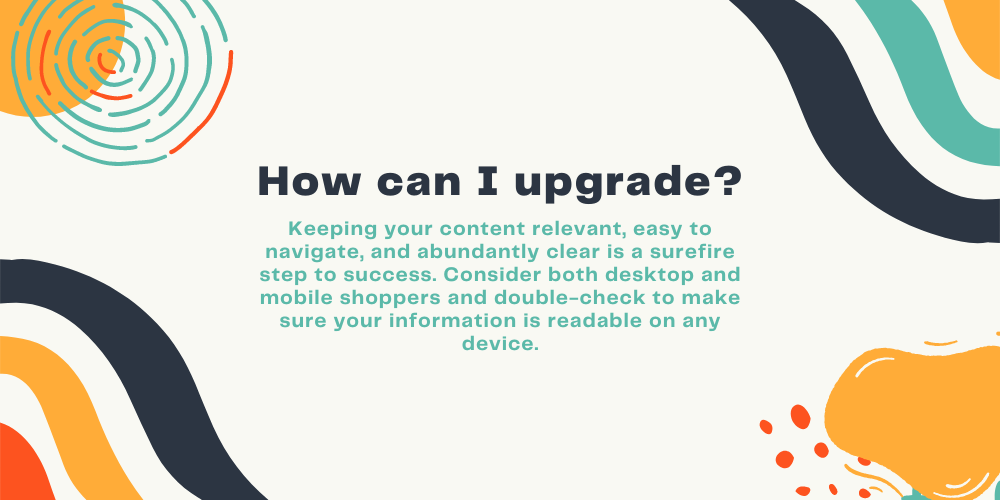
How Can I Upgrade?
What is the best way to make buying from your company easy and enjoyable? Keeping your content relevant, easy to navigate, and abundantly clear is a surefire step to success. Consider both desktop and mobile shoppers and double-check to make sure your information is readable on any device. Some great areas for improvement are:

How Do I Measure Success?
Once you begin implementing your strategy, you need a reliable way to track its effectiveness. As you begin to wade through your challenges and successes, you may notice areas for improvement. Don’t shy away from making changes as needed.
Here are some things to monitor.
Customer Acquisition Cost (CAC)
How much are you spending to acquire new customers? Is it paying off?
Your CAC is the total cost of marketing and sales efforts divided by the number of customers acquired. To compute your cost, consider paid advertising, the salary of your marketers and salespeople, email marketing, paid search, social media campaign costs, and any other investment or expense.
Conversion Rate
Your conversion rate is the number of site visits you receive divided by the total number of transactions.
Conversion rates can be used to track the success of social media or influencer campaigns and give you a broader insight into how your products or services are received by your target audience. If you are unhappy with your conversion rate, it’s time to make adjustments!
Average Order Value (AOV)
AOV is the average dollar amount spent on each transaction. AOV should increase over time as customer loyalty grows.
Customer loyalty programs, discounts, free shipping promotions, upselling and cross-selling, coupons, and return policy changes can affect AOV.
Customer Retention Rate
It is important to keep track of how many repeat customers you have vs. first-time customers. For returning customers, CAC is much lower. It is beneficial (and profitable) for your business to foster brand loyalty.
Customer Lifetime Value (CLV)
Take a broader view. Customer lifetime value measures how valuable a customer is to your company across the whole relationship rather than on a purchase-by-purchase basis.
CLV is calculated by multiplying your customers’ average purchase value, average purchase frequency, and average customer lifespan.
Shopping Cart Abandonment Rate & Returns
Success is all about the follow-through! It’s important to look specifically at how many customers abandon their carts after beginning the checkout process, and how many complete the sale only to return the purchased item.
Once you acquire this information, it’s time to address issues with the checkout process or product quality.
If you’re looking to develop a solid strategy to boost your sales and get your company noticed, our team of e-commerce selling experts are here to lend a hand. We understand the intricacies of Amazon and Walmart and can help you realize your goals. Reach out to our e-commerce experts to set up a free consultation today. From there, you will receive an email to schedule an appointment time that works for you.
